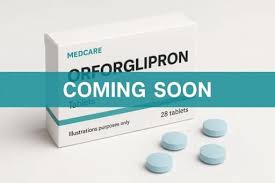.webp)
I've been tracking pharmaceutical breakthroughs in weight management for years. The injectable GLP-1 medications like Wegovy and Mounjaro dominated headlines with impressive results, but accessibility remained a major barrier.
Then Eli Lilly's orforglipron data landed on my desk.
The clinical results are remarkable. In Phase 3 trials, participants taking the highest dose lost an average of 27.3 pounds over 72 weeks. Nearly 60% of participants lost at least 10% of their body weight.
This represents the first successful oral GLP-1 receptor agonist to complete Phase 3 trials. No injections. No refrigeration requirements. No complex supply chain logistics.
The accessibility implications are staggering. Currently, about 8 million patients use injectable obesity medications. But an estimated 170 million could benefit from these treatments.
The gap between need and access has been a persistent challenge for healthcare systems worldwide. Injectable medications require cold storage, specialized handling, and often face supply shortages that limit patient access.
Orforglipron eliminates these barriers entirely.
From a cost perspective, the economics are compelling. Analysts project that production costs could be 30-50% lower than injectable alternatives. Small molecule manufacturing scales more efficiently than engineered peptides.
For corporate health programs, this creates interesting possibilities. The current injectable market has been challenging for employers to navigate due to high costs and supply constraints. An oral alternative with comparable efficacy but lower costs could reshape employee benefit strategies.
The competitive landscape shifts significantly. In head-to-head trials, orforglipron outperformed Novo Nordisk's oral semaglutide, with participants losing 9.2% of body weight compared to 5.3% with the competitor drug.
This performance advantage, combined with manufacturing cost benefits, positions Lilly to potentially undercut existing market pricing while maintaining superior clinical outcomes.
Implementation challenges remain. FDA approval timelines, market penetration strategies, and physician adoption patterns will determine how quickly this breakthrough translates into widespread patient access.
The pharmaceutical industry has struggled with GLP-1 supply constraints for years. Lilly's confidence in launching orforglipron without supply limitations suggests they've learned from these market dynamics.
What makes this particularly interesting is the global trial design. Participants came from the United States, China, Brazil, India, Japan, South Korea, Spain, Slovakia, and Taiwan. This diverse population data strengthens the case for broad clinical applicability.
The timing aligns with growing corporate interest in metabolic health interventions. As employers seek cost-effective ways to address chronic disease management, accessible oral medications could become central to preventive care strategies.
For healthcare decision-makers, orforglipron represents more than just another treatment option. It's a potential solution to the accessibility crisis that has limited GLP-1 therapy adoption despite proven clinical benefits.
The question becomes implementation speed and market dynamics as this oral breakthrough moves toward approval and widespread availability.

I've been tracking pharmaceutical breakthroughs in weight management for years. The injectable GLP-1 medications like Wegovy and Mounjaro dominated headlines with impressive results, but...
